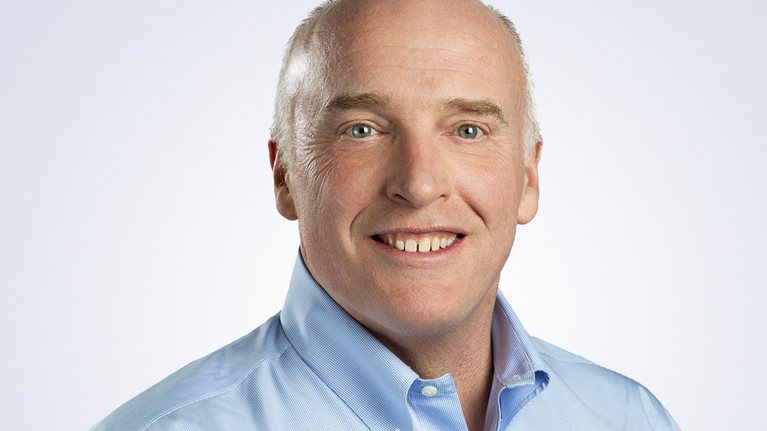In this edition of Author Talks, McKinsey Global Publishing’s Lucia Rahilly chats with Jennifer Moss, Harvard Business Review contributor, nationally syndicated radio columnist, and member of the Global Happiness Council. In her book, The Burnout Epidemic: The Rise of Chronic Stress and How We Can Fix It (Harvard Business Review Press, September 2021), Moss reveals the real causes of burnout and how organizations can stop the chronic stress cycle that an alarming number of workers suffer. An edited version of the conversation follows.
Everyone’s talking about burnout. How bad is it, really?
Burnout has been a problem for a long time. It was in 2019 that the World Health Organization identified burnout—workplace stress left unmanaged—as an occupational phenomena. Burnout prepandemic, and this is overwork alone, was responsible for the deaths of 2.8 million people a year.
How has the COVID-19 pandemic changed the conversation on burnout?
There’s always a silver lining with any challenging event that happens in life. One of them would be that it’s shone a light on [burnout], but it’s also helped us as employees and individuals—because we faced our own mortality for the past 20 months—choose how we want to live, who we want to be, and how we want to work. People are saying, “I’m going to choose a different career,” and “I’m going to choose a different job.”
Because this is now a bottom-line issue, employers have to respond. We’re seeing more conversations around mental health at work. We’re seeing more commitment to having well-being and burnout prevention be a part of strategy. In the future of work, there will be some benefit to swinging this pendulum really far in one direction.
We’ve hit a wall
Are some personalities more at risk of burnout than others?
Introverts can be more at risk of burnout. When we did the research initially, introverts would say, “I’m living my best life. I’m so happy to be at home. I’m so comfortable being behind my desk. This is the happiest place on Earth.”
What we saw through the data later on was this desire to get back to work. Self-reported introverts would say, “I used to at least have this one place that I would go where it would bring me out of my shell,” or, “I would have some friends to talk to,” or, “I would meet up with people.” Now it’s, “I’m finding it really difficult because I’m so isolated and lonely.”
We thought extroverts would hate being secluded, but because extroversion and agreeableness tend to go hand in hand, they’ve figured out ways to adapt and have more emotional flexibility during this lockdown.
So is burnout ultimately about my workplace—or about me?
I look at burnout prevention as part of an ecosystem; all parts need to be working together. Before we can eradicate burnout, we need to have, at the organizational level, the systems and policies in place that are not so focused on self-care—wellness technology, subsidized gym memberships, yoga, breathing—but more focused on the root causes of burnout.
Eighty-five percent of the global workforce feels that their well-being has declined, so those [self-care perks alone] aren’t going to work. There are two groups, “us” and “them,” trying to solve for burnout. That’s why it’s failing.
Where do we start in the battle against burnout?
We need to be looking at this as a crisis. We need to pause and ask, “Why are we still doing things that we did on March 17, 2020?” We are in an endemic at this point. We need to start creating sustainable ways of working in this moment. Ten to 12 hours of videoconferencing is not sustainable.
I keep seeing companies make big declarations like, “We gave a week off to our burned-out employees.” There’s so much irony to that. You’ve burned them out, so you’re giving them a week off, but have you [alleviated the] workload so when they go back they’re not dealing with the debt they’ve created? The first thing we should be doing is asking, “How do people feel about the holiday party? How do people feel about this yoga that we’re doing? How do people feel about this app that we gave them to help them meditate, but they’re working 70 hours a week?” Just being able to talk about mental health at work is a better work perk than helping you to meditate when you’re really mentally unwell.
I keep seeing companies make big declarations like, ‘We gave a week off to our burned-out employees.’ There’s so much irony to that. You’ve burned them out, so you’re giving them a week off, but have you [alleviated the] workload so when they go back they’re not dealing with the debt they’ve created?
Keep it positive
What is positive gossip, and how does it help?
Positive gossip is one of the greatest interventions that we could be using inside of our organizations. Researchers [Nicholas] Christakis and [James] Fowler talk about this “contagion” effect. We have social contagions that could be anything from loneliness and divorce to happiness and gratitude. When organizations focus on what they have versus what they don’t have, people’s attitudes change. The culture becomes much more of a growth mindset versus a fixed mindset.
Part of that is just making sure that the narratives you’re constantly using are positive. We should be saying, “Hey, you know that presentation that you did last week? It was so good. I took these two key points, and I brought them back to my team and actioned them, and what I saw was really valuable. I noticed my team working differently; they were more collaborative. Thank you for that.”
That’s showing that you are empathetic. That’s showing that you listened. That’s showing that you’re actually bringing this into the fold and into your work, and it’s making it better. For that person, [your reaction] has such long-lasting impacts from a standpoint of their own sense of self-efficacy. That continues to become this contagion effect—this network effect—of high productivity, high sense of self-efficacy, and value. Every boat is lifted when we behave that way.
Just being able to talk about mental health at work is a better work perk than helping you to meditate when you’re really mentally unwell.
Looking back, what problem were you trying to solve with this book?
The research was an evolution of the work I’ve been doing on workplace culture. I originally focused on social-emotional intelligence—building cognitive traits like hope and efficacy and resilience, which I felt were really important for us as individuals.
When you bring those traits into the workplace—if you don’t have a workplace that’s going to be receptive of the work that you’re doing on yourself, and it continues to detract from your happiness, your emotional intelligence, and your psychological fitness—then you can feel defeated. It ends up not actually increasing your life satisfaction or job satisfaction.
So my goal became, how do we make sure that the organizations that we spend 50 percent of our waking hours at don’t detract from that? And to provoke people to think, “As a leader inside of this organization, I have a responsibility to not do that to people who are working hard to try to show up to work in a place that’s healthy. The last thing I want to do is make them unhealthy.”
Good enough is not enough
What surprised you most in the research?
There were some really cool things that I landed on in the research. One of them was analyzing the idea of freezing eggs as a perk for women inside of organizations. I started to really dig deep into this.
Through the research, I understood how sexist, ageist, and dangerous it is to have that kind of perk inside of an organization. What it says to women is, “Put off family planning because you’re in your best age to produce,” and all of the “isms” that come out of that. That was one area that I just could not get out of. I was in a rabbit hole of data and other people’s opinions about it.
I felt it was so important to add it to the book because it’s a perfect example of how we think we’re doing the right thing. We’re just creating more of the subversive, biased thinking inside of our organizations that can have really long-term effects. If you look at it in a macro way, it explains what is wrong right now with the way we think about how to increase wellness in people’s lives at work.


